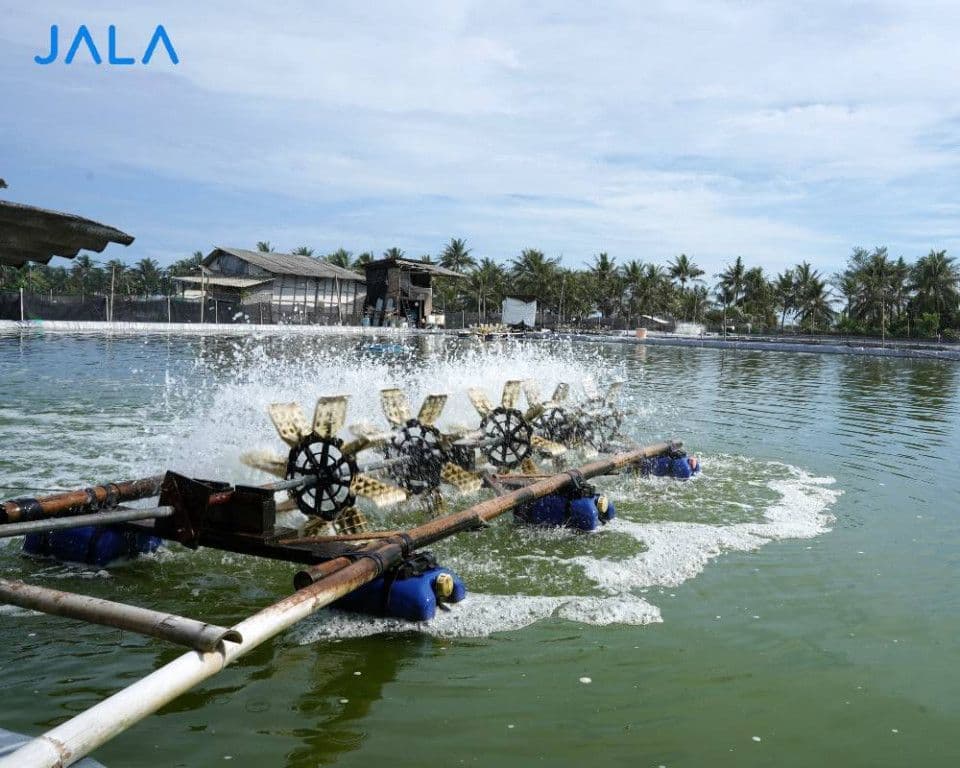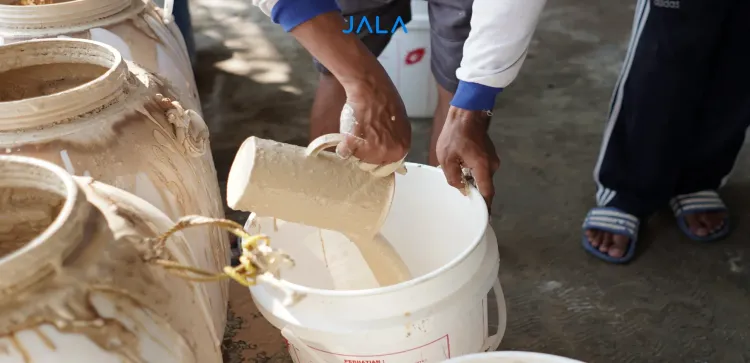
Shrimp belongs to the group of invertebrates that physiologically have a unique feature where their immune system is still primitive or lacks memory cells. This is why shrimp cannot produce antibodies as a specific form of immune defense. Nevertheless, shrimp still have a non-specific immune defense system and protection from their exoskeleton and mucus layer.
Immune defense that protects shrimp from pathogenic infections
Exoskeleton and Mucus Layer
Shrimp are classified into the crustacean group. Based on this classification, the shrimp body surface is covered by a hard layer called the exoskeleton. The exoskeleton is a skeletal system in all crustacean organisms, supporting and protecting the body against environmental conditions, including protecting shrimp bodies from unknown substances that could harm the shrimp's internal organs[3].
The surface of the exoskeleton is covered by a layer of mucus. This layer becomes the initial protection for shrimp against attacks from pathogens living in the water column[3].
Non-Specific Immune System in Shrimp
The defense provided by the exoskeleton and mucus layer is not always sufficient, especially when there are wounds on the shrimp's body or when water quality is poor. Pathogens that manage to penetrate the shrimp's body will trigger the nonspecific immune system to respond. Shrimp's nonspecific immune system can be categorized into two types of immune responses, namely cellular and humoral.
Non-Specific Cellular Immune Response
The cellular immune response in shrimp is carried out by immune cells that interact with infecting pathogens. The primary immune cells in the shrimp's blood are called hemocytes. One of the activities done by this cell to eliminate pathogens is phagocytosis, where hemocytes engulf and destroy pathogens or unknown substances that enter the shrimp's body[3].
Non-Specific Humoral Immune Response
The non-specific humoral immune response is a form of body defense carried out by a number of biomolecules in the blood. In crustaceans, the non-specific humoral immune response is carried out by lysozyme enzyme, C-type lectins, and phenol oxidase (PO). Each of these components has its specific function, but all of them have the common goal of eliminating pathogens that could cause abnormalities in the shrimp's body[3].
When shrimp is infected with a pathogen, C-type lectins signal hemocytes to initiate a series of cellular defenses aimed at destroying the pathogen.
Lysozyme prevents pathogenic bacteria from infecting the host's body by damaging their cell walls, leading to bacterial cell lysis. This effectively kills the pathogenic bacteria and breaks the chain of bacterial reproduction[3].
When pathogens infect shrimp’s body, PO enzyme will catalyze the oxidation of phenolic compounds in the hemolymph, ultimately producing the pigment melanin. The melanization process also stimulates hemocytes to perform phagocytosis on pathogens isolated by melanin[3].
Boosting Shrimp's Immune System Using Immunostimulants
The risk of disease can be minimized through the use of immunostimulants. Immunostimulants are substances that enhance shrimp's non-specific immune responses, forming immunity against specific pathogens.
The purpose of administering immunostimulants is to strengthen the shrimp's immune system, reduce mortality, and prevent crop failure due to disease outbreaks. Here are some sources of immunostimulants to enhance the shrimp's immune system and their application:
Immunostimulants Sourced from Probiotic Bacteria
Probiotic bacteria can be mixed into shrimp feed or added to the water in ponds. Probiotic bacteria are now commercially available and have been proven to reduce the populations of pathogenic microorganisms in the water, enhance shrimp's immune systems, and optimize the growth of cultivated shrimp.
Immunostimulants Sourced from Algae
Microalgae and macroalgae are sources of several bioactive molecules known to enhance shrimp's non-specific immune systems, such as fucoidan, alginate, laminarin, and carrageenan. Products based on algae extract have been found effective in increasing resistance to infections by various pathogens, including Vibrio alginolyticus and WSSV. Utilizing bioactive compounds sourced from algae can be obtained by mixing them into shrimp feed to enhance cellular and humoral immune responses during shrimp rearing[3].
Immunostimulants Sourced from Yeast
Yeast is commonly known as a basic ingredient in making bread or beer. Yeast cells contain various nutrients needed by fish and shrimp, including proteins, lipids, vitamins, and minerals. Yeast can also be used as a feed additive in shrimp feed due to β-glucans. β-glucan compounds in yeast cells have been shown through research to enhance the activity of phenol oxidase enzymes and a series of shrimp immune responses against pathogenic bacteria like Vibrio harveyi[3].
Immunostimulants Sourced from Feed Additives
Shrimp feed can be enriched with various feed additives according to their nutritional needs. The addition of feed additives such as vitamins A, C, and E in the right doses can strengthen shrimp's immune system against infectious diseases. Carotenoid compounds are also a commercial type of feed additive that can reduce stress levels in response to environmental changes and serve as antioxidants before or after disease infection[3].
Using Immunostimulants to Strengthen Shrimp's Immune System Sustainably
Probiotic bacteria, fungi, algae, and plants have been proven effective as immunomodulators for cultivated shrimp. The use of biologically sourced immunostimulants can reduce the excessive use of antibiotics, ensuring product safety and the sustainability of shrimp cultivation.
Besides the use of immunostimulants, the success and sustainability of shrimp farming also depend on feed management, water quality, and wastewater management that follow the guidelines of Good Aquaculture Practices for shrimp commodities.
References
[1] Babu DT, Antony SP, Joseph SP, Bright AR, Philip R. 2013. Marine yeast Candida aquaetextoris S527 as a potential immunostimulant in black tiger shrimp Penaeus monodon. Journal of invertebrate pathology. 112(3):243-252.
[2] Karunasagar I, Ababouch L. 2012. Shrimp viral diseases, import risk assessment and international trade. Indian Journal of Virology. 23:141-148.
[3] Kumar S, Verma AK, Singh SP, Awasthi A. 2023. Immunostimulants for shrimp aquaculture: paving pathway towards shrimp sustainability. Environmental Science and Pollution Research. 30(10):25325-25343.
[4] Kongnum K, Hongpattarakere T. 2012. Effect of Lactobacillus plantarum isolated from digestive tract of wild shrimp on growth and survival of white shrimp (Litopenaeus vannamei) challenged with Vibrio harveyi. Fish & shellfish immunology. 32(1):170-177.
[5] Kumar R, Ng TH, Wang HC. 2020. Acute hepatopancreatic necrosis disease in penaeid shrimp. Reviews in Aquaculture. 12(3):1867-1880.
[6] Shen WY, Fu LL, Li WF, Zhu YR. 2010. Effect of dietary supplementation with Bacillus subtilis on the growth, performance, immune response and antioxidant activities of the shrimp (Litopenaeus vannamei). Aquaculture Research. 41(11):1691-1698.





